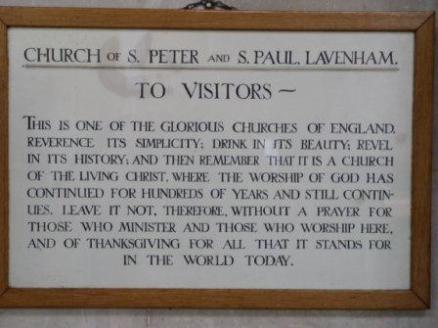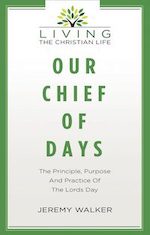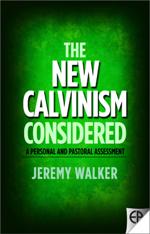Posts Tagged ‘Suffolk’
Lavenham: battleground of William Gurnall
Kelvedon ∙ Stambourne ∙ Colchester ∙ Lavenham ∙ Dedham ∙ Maldon

 Lavenham is a beautiful Suffolk village. It is characterised by an abundance of half-timbered houses, and every street – especially those around the market place – speaks of a rich medieval and Tudor history. Lavenham owes its prominence and wealth to the wool trade of the 15th and 16th centuries, which was the foundation of the fortunes of its richest and most generous benefactors. Some of that wealth can be seen in the massive and impressive “wool church,” St Peter and St Paul, which marks out the village as one travels toward it. The prominent tower (141 feet, or 43 metres, the highest of a village church in Britain) was known during the Second World War as “Thank God tower” to the airmen of USAAF Station 137 – flying in to Lavenham airfield on return from bombing missions, it was one of the first identifiable indications that they were safely home.
Lavenham is a beautiful Suffolk village. It is characterised by an abundance of half-timbered houses, and every street – especially those around the market place – speaks of a rich medieval and Tudor history. Lavenham owes its prominence and wealth to the wool trade of the 15th and 16th centuries, which was the foundation of the fortunes of its richest and most generous benefactors. Some of that wealth can be seen in the massive and impressive “wool church,” St Peter and St Paul, which marks out the village as one travels toward it. The prominent tower (141 feet, or 43 metres, the highest of a village church in Britain) was known during the Second World War as “Thank God tower” to the airmen of USAAF Station 137 – flying in to Lavenham airfield on return from bombing missions, it was one of the first identifiable indications that they were safely home.
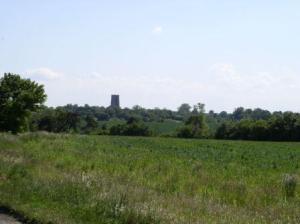
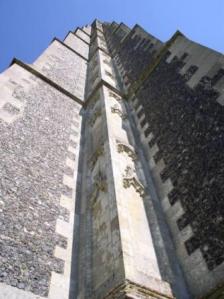
My interest in Lavenham lies in the fact that it was the place in which William Gurnall plied his holy trade. Gurnall was the author of the magnificent volume, The Christian in Complete Armour (Banner of Truth; also in three volumes and online). I do not underestimate the value of the book when I suggest that you should sell your second-best pair of trousers in order to become its owner.
Gurnall was born in 1617 at the thoroughly Protestant town of King’s Lynn, Norfolk. Gurnall might well have heard godly and faithful preachers during his formative years. Here he would also have developed that familiarity with the sea, sailors and shipping which provided the foundation for the regular appearance of nautical illustrations in his writings.
He was educated at the free grammar school of his native town, which had two scholarships to the eminently Puritan Emmanuel College, Cambridge, in its gift. Gurnall received a nomination to one of these scholarships in December, 1631. He graduated B.A. in 1635 and M.A. in 1639. There is little known of him for the succeeding five years, though there is a suggestion that he officiated as curate at Subury, not far south of Lavenham. He was made rector of Lavenham in 1644, doubtless a good living. During the period of his service there, men such as John Owen, Stephen Marshall, and Matthew Newcomen would have been at one time or another living within twenty miles.
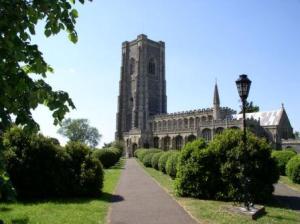
After the Restoration, Gurnall the Puritan nevertheless continued Gurnall the Churchman: he signed the declaration required by the Act of Uniformity 1662, remaining with the Church of England when multitudes of faithful men were turned out, unable for conscience’ sake to remain within. The reasons are unknown. It is plain that Gurnall’s theological sympathies were with the Puritans; his ecclesiastical commitment kept him within the Church of England. This, surmises J. C. Ryle, probably led to his being ostracised by both sides. Ryle also notes unsubstantiated and possibly malicious “floating traditions” that suggest that his ministry lost its power and saw little blessing after 1662.
Gurnall died on 12th October, 1679, and was buried at Lavenham (the precise spot is not known). The evidence suggests that he had always been a man of weak health.
The Christian in Complete Armour was first published in three volumes, dated 1655, 1658 and 1662. It consists of sermons on Ephesians 6:10-20 delivered by Gurnall in the course of his regular ministry: in dedicating it to his hearers, he calls it “a dish from your own table ” (1:1). All the indications are that Gurnall was an effective, earnest, appreciated minister of the gospel. St Peter and St Paul is no mean building, and it is suggested that it would have been very full during Gurnall’s sermons. A sixth edition of his work was published in the year he died, indicating a ready appreciation of its quality. It is, in essence, a training manual in Christian warfare. Weighty in every sense, Gurnall is sober, balanced and insightful, never failing to make piercing practical application of his text. His style is relatively easy, full of illustration, well-organised, and clear, with some wonderful pithy declarations scattered throughout.
Gurnall says:
The subject of the treatise is solemn, A War between the Saint and Satan, and that so bloody a one, that the cruellest which ever was fought by men, will be found but sport and child’s play to this. Alas, what is the killing of bodies to the destroying of souls? It is a sad meditation indeed, to think how many thousands have been sent to the grave in a few late years among us by the sword of man; but far more astonishing, to consider how many of those may be sent to hell by the sword of God’s wrath. It is a spiritual war you shall read of, and that not a history of what was fought many ages past and is now over; but of what now is doing, the tragedy is at present acting, and that not at the furthest end of the world, but what concerns thee and every one that reads it. The stage whereon this war is fought, is every man’s soul. Here is no neuter in this war. The whole world is engaged in the quarrel, either for God against Satan, or for Satan against God (1:2-3).
Charles Haddon Spurgeon commented:
Gurnall’s work is peerless and priceless; every line is full of wisdom; every sentence is suggestive. The whole book has been preached over scores of times, and is, in our judgment, the best thought-breeder in all our library. This ‘Complete Armour’ is beyond all others a preacher’s book: I should think that more discourses have been suggested by it than by any other uninspired volume. I have often resorted to it when my own fire has been burning low, and I have seldom failed to find a glowing coal upon Gurnall’s hearth. John Newton said that if he might read only one book beside the Bible, he would choose ‘The Christian in Complete Armour’, and Richard Cecil was of much the same opinion. J. C. Ryle has said of it, ‘You will often find in a line and a half some great truth, put so concisely, and yet so fully, that you really marvel how so much thought could be got into so few words’. Happy Lavenham, to have been served by such a pastor!
Note that at the time of writing the church has no rector. There was no sign of Gurnall’s work in the little shop within the building (Joyce Meyer made an appearance, though!), and I hope to correct that, if I am able. However, the sign below I found on the wall of the church. It is a prayer that those who love the truth for which Gurnall stood and still stands might invest with the best meaning in seeking God’s continued blessing upon this church and its ministry. You might pray that Lavenham would be made happy by another true Christian who will preach the gospel of Christ in all its saving and sanctifying excellence, and equip his people once more for the best fight in the world.
